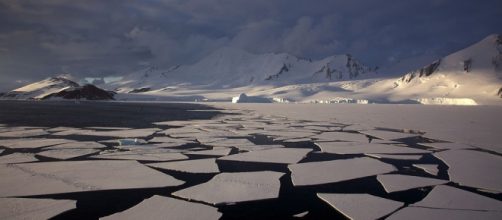The Antarctic Ocean has remained unchanged by global warming due to the Deep Ocean water that is constantly pulled to the surface in a centuries-long pas de deux, a new study has found. The University of Washington and the Massachusetts Institute of Technology’s latest research discovered that ocean currents and strong winds keep the seawater around Antarctica at nearly the same temperature, despite some warming in other bodies of seawater.
Climate models.
Climate models and satellite imagery show that the unique currents around Antarctica are constantly pulling seawater up to the surface, which last touched the Earth's atmosphere before the Industrial Revolution.
The paper was published online May 30 in the journal Science Direct in Remote Sensing of Environment. It shows gale-force westerly winds are constantly whipping around Antarctica and pushing surface water north, continuously drawing up water from far below. The Southern Ocean's water comes from such great depths, and from sources that are so deep, that it takes centuries before the water reaches the surface and interacts with the atmosphere. Even if it does, the average temperature above the Southern Ocean is so cold that its impact is insignificant.
"With rising carbon dioxide you would expect more warming at both poles, but we only see it at one of the poles, so something else must be going on," said lead author Kyle Armour, a UW assistant professor of oceanography and of atmospheric sciences.
"We show that it's for really simple reasons, and ocean currents are the hero here."
Studying Bi-Polar Behavior in the Ocean
Other regions across the planet, such as the America’s West Coast and the equator, cycle with water that’s about a hundred yards beneath the surface. As such, they don’t undergo the same cyclic effects as the Southern Ocean. Armour added that the Southern Ocean is also different because it’s bringing water up from several thousand yards.
"The old idea was that heat taken up at the surface would just mix downward, and that's the reason for the slow warming," Armour said. "But the observations show that heat is actually being carried away from Antarctica, northward along the surface," he said.
Thermochaline circulation.
In the Atlantic, the northward flow of the ocean’s surface continues all the way to the Arctic along the Atlantic Gulf Stream current, which is part of the global Thermohaline circulation. Researchers used dyes and computer models to show how seawater that is warmer tends to migrate toward the North Pole.
This is another reason why Antarctica is largely unaffected, researches said. Since 1950, the surface temperature of the oceans has increased by only 0.08 degrees Celsius (0.14°F) per decade. The Southern Ocean, however, has experienced a rise of just 0.02 degrees Celsius (0.04°F), with climate models exaggerating warming at both poles.
Southern Ocean.
The study also found that the Southern Ocean, which helps determine sea-ice extant, is guided by Deep Ocean ridges and vast canyons that girdle Antarctica’s continental shelf, and not by global warming or other climatic conditions.
Antarctica sits atop one of the most geologically active areas on the planet, causing portions of West and East Antarctica to melt from below, releasing giant icebergs into the ocean. At the South Pole, the ice coverage this year is only slightly below average and satellite measurements have shown a marked increase since 1979. Most of the world’s glaciers are located in Antarctica, and they continue to grow each year.

